Is Okra Healthy?
I am excited about sharing some of the amazing health benefits of okra. Many people wonder if okra is healthy. These little pods are nutrition powerhouses, but they get very little credit. Maybe it is because of their slimy texture.
Let’s explore a few of these benefits. First, we will talk about eating raw okra benefits.
Eating Raw Okra Benefits
Like any fruit or vegetable, eating raw provides benefits. The barrier many of us have to eating raw okra is the slime. However, marinating it in some flavorful olive oil and a good vinegar along with fresh herbs and other vegetables is tasty and the marinade minimizes any slime. You can also cut up okra and put in vinegar to make fresh pickles sort of like the ones that you make with cucumbers.
A raw pod of okra can make a great vegetable for dipping.
Nutrition Benefits of Okra
Is okra high in fiber?
- Rich in soluble fiber which may help reduce cholesterol and blood sugar levels. Having adequate dietary fiber along with maintaining healthy blood cholesterol and sugar helps reduce the risk of heart disease.
- Okra is high in a number of vitamins and minerals. One of these includes vitamin K which is an important nutrient needed for blood clotting.
- Okra is rich in antioxidants which can help reduce the free radicals in our body and may help prevent cancer.
- Along with beneficial plant chemicals that help prevent cancer, they can also help boost our immune system.
- Researchers suggest eating 5-9 fruits and vegetables a day for good health. Okra can be one of the foods that gets you to that goal!
Interview with Chris Smith: The Okra Whisper
I recently had a chance to talk with Chris Smith about the amazing health benefits of okra and many other reasons why we should grow it and eat it. Chris, an expert okra enthusiast, wrote “The Whole Okra: A Seed to Stem Celebration” which recently has been awarded a 2020 James Beard Award for Reference, History and Scholarship ! Congratulations Chris!
The “Whole Okra is a little bit of history, botany, gardening, cookbook and a health and nutrition book rolled into one. It is all you wanted to know about okra but were afraid to ask or “100 Reasons that You Should Grow and Eat Okra”.
After having read “The Whole Okra” book, I had a chance to catch up with Chris to talk about his book and his experience growing okra as part of his research for the book.
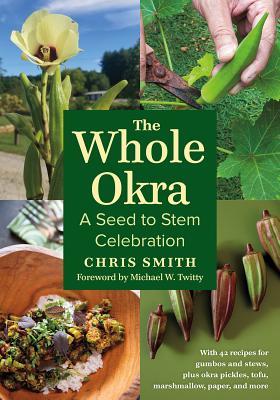
Interview with Chris About The Whole Okra and the Amazing Health Benefits of Okra
Vine Ripe Nutrition: I know you mentioned your first experiences with okra, but how did you happen to fall in love with the okra plant in your garden and decide that you wanted to write a book about it?
Chris: I like to say that okra found me, not the other way round. A friend of my fiance, Belle named Linda Lee, gifted us a dried okra pod along with a wonderful box of indian spices, as a bridal shower gift. Linda had grown the okra from seeds she bought and since saved from a roadside farmstand in Rosman NC. I felt the weight of the seeds’ story and planted them in Asheville when I moved up here in 2013. That was certainly the start of this love story!
Indian spices sounds fantastic to cook with okra!
Vine Ripe Nutrition: Tell us a little more about the origins of okra.
Chris: I go into greater depth in the first chapter of my book, but in short okra was likely domesticated in the Ethiopian region of east Africa. There is good evidence to suggest that okra’s ancestors were Indian/Asiatic in origin. The okra that arrived in the Americas had originated from the west coast of Africa during the slave trade, where it had been grown for a long time.
Vine Ripe Nutrition: How many varieties of okra are out there? (or how many do you estimate) Tell us a little bit about your Okra Diversity Trial.
Chris: So far, I have grown around 125 varieties of okra, but this is a small drop in the ocean when you look at genebanks like the USDA and the Indian and Nigerian seed banks, which list thousands of varieties. In 2018, I started doing large variety “grow outs” in part to explore the diversity that exists within okra. We found such a wonderful range of plant types, pod types, leaf types etc. It was quite rewarding, and we’ve continued to grow out and document these varieties through my work with the Utopian Seed Project.
That is so very cool!
Vine Ripe Nutrition: Share with us a little bit about the diverse things that you can do with okra and some of the amazing and surprising things that you can do with it.
Chris: One of the things I love about okra is that the whole plant is useful to the home gardener (and beyond). My book is titled, The Whole Okra: A Seed to Stem Celebration, so in a way this question can only be fully answered by reading the whole book!
But some highlights that spring to mind would be: the petiole of okra is hollow, and some varieties are suitable for drying down into compostable straws; the flowers can be dried and infused into a delicious tea; the tough/fibrous pod can still be shelled for a tender seed inside; the mature seeds can be roasted and ground into a nutty coffee-esque flour. And so much more!
Can’t wait to try some of these things!
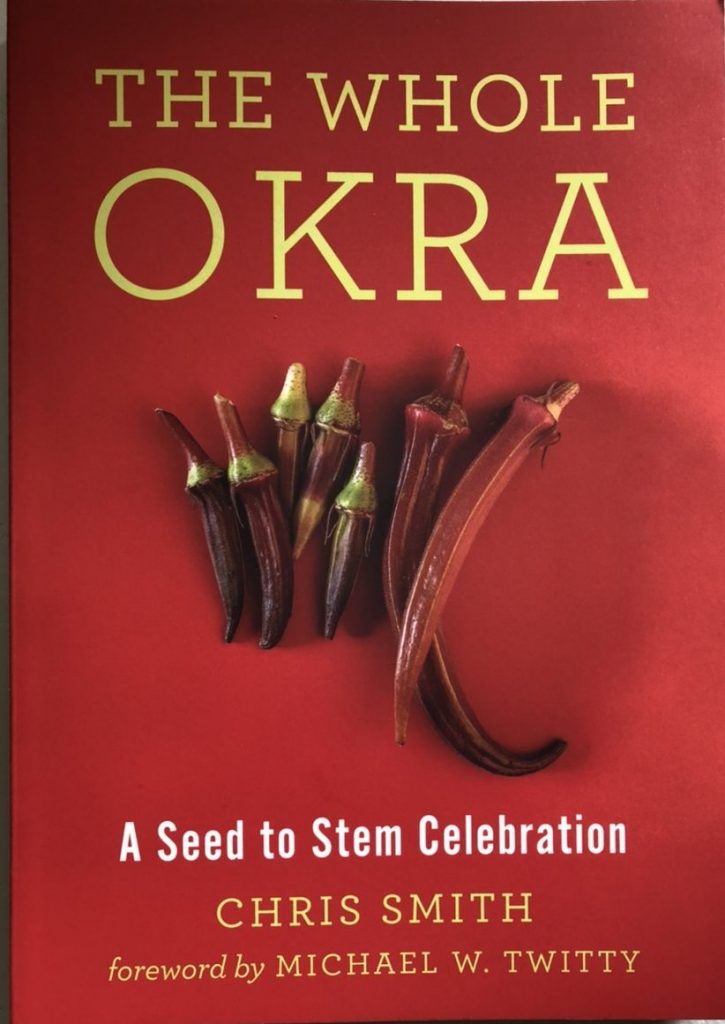
Vine Ripe Nutrition: I know that asking you to pick a favorite variety would be tough, but could you share your top five?
Chris: At the moment I’m enamored with Aunt Hettie’s Red, a TN heirloom with great flavor that Slow Food Asheville is spotlighting this year in their heritage food project (see more about their project below).
Puerto Rico Evergreen is a variety I pulled out of the USDA collection of seeds and know very little about, but it’s quick to produce and tastes great. We also discovered some interesting genetic divergence in this variety, with some pods being all green and some with red blushing. We’re currently working to tease out the two strains of these seeds.
Sea Island Red is an okra that came to me from Sarah Ross who received those seeds from the Gullah Geechee seed saving matriarch of the Georgian Sea Islands shortly before she died. The bag I received the seeds in had Ethiopian Okra written in black sharpie and then the name, Sea Island Red. We have no explanation and no way to get one, but I love the mysterious connection back to the homeland of okra. I have been sending these seeds to any Gullah Geechee I meet!
Yalova Akkoy is a Turkish okra that I won the first okra taste test I ever did (with 60 varieties of okra), I enjoy the variety but also the fact that Turkey has an okra culture of regional domesticated “landraces” (a local variety that has developed) which are locally prized and selected for flavor.
Mr. Bill’s Big Okra is a variety which I received at a seed swap that had no background story. The variety stunned me out in the field because it was so big and productive. The pods were the stubby type, but stayed buttery tender even when they were big. This plant was also green all the way through, which is actually rare for okra. There is almost always evidence of red somewhere on the plant, but not with Mr. Bill’s Big Okra!
Vine Ripe Nutrition: I would like to ask, how could you keep those variety notes straight? I guess it is a little easier than keeping wine or beer tasting notes straight.
Chris: Okra flowers are self-pollinating and self-fertile, so it’s actually quite easy to pop a bag over a flower shortly before it opens and allow that flower to pollinate itself without the interference of cross pollinating insects. That is the way I can easily save a few ‘pure-seed’ pods from each variety.
Vine Ripe Nutrition: I loved listening to your interview with Melina Hemmelgarn on her Food Sleuth Radio, where you discussed “embracing the slime” and the fact that the slime often is a make or break for many people when it comes to okra. You mentioned making okra water, creating a vegetable pate to make into fritters and also using for a natural thickener for soups. Are their other ways to welcome the thicker side of okra into your life?
Chris: The classic and widely embraced dish that celebrates okra’s thickening effect is gumbo. Everyone hates the slime until it comes to gumbo and then it’s loved and appreciated! Another interesting use for the slime, which has some roots in Korea (with a related species), is in papermaking. We made okra fiber paper from the bast fibers (innerbark/skin) but used pulverized okra root as a thickening agent for the solution to help bind the paper together.
Making okra paper sounds so fun!
Vine Ripe Nutrition: Tell us a little about your roasted recipe and why you decided on this recipe to share.
Chris: The roasted okra recipe is quick and simple and delicious. It is simply the dish that converts the most people from hating okra to loving okra!
Vine Ripe Nutrition: You talked about ways to preserve okra like drying, fermenting, pickling, canning and freezing. What are some of the best ways to prepare something out of dehydrated or frozen okra?
Chris: The main way I use frozen okra is for the roasted okra recipe above. If you cut the okra lengthwise before freezing then you can go straight from the freezer to the oven and have roasted okra fries in the depths of winter and notice very little difference from fresh okra.
The main way I use dehydrated okra is in soups and gumbos. 2lbs of fresh okra dries to about 4oz (variety depending), so that’s quite the concentration of flavors. I slice my okra into rings before drying. The dried okra is shelf stable, can be snacked on as is, but when it’s dehydrated into a winter soup, then the okra reabsorbs the flavors of whatever stock you’re cooking with. I truly believe soups and gumbos made with dried okra are superior to those made with fresh.
Vine Ripe Nutrition: Tell me a little bit more about the Slow Food Heritage Seed Project and why your group decided to grow the Aunt Hettie’s Variety?
I think Slow Food Asheville answer this question best:
“We have launched Slow Food Asheville’s Heritage Food Project, an annual celebration of agricultural biodiversity, gardening education, seed saving, flavor, and community.
This year we are highlighting Aunt Hettie’s Red Okra, a variety valued for its flavor and beauty. We are working closely with the Utopian Seed Project, a WNC organization that has researched and grown many varieties of okra in its efforts to develop a “regional seed hub” that supports a strong local food system.
How will it work this summer? We share thousands of seeds to community groups and home gardeners. Then we all plant, tend, grow, and eat Aunt Hettie’s red okra throughout the summer! We will be checking in with people to hear about and share our gardening stories and culinary adventures!”
You can read more about getting involved HERE.
I am currently growing Aunt Hettie’s Red in our garden and look forward to participating in Slow Food Asheville’s Heritage Food Project.
Vine Ripe Nutrition: Where can we purchase your book and learn more about what you do and follow your garden stories?
Chris: The book can be purchased directly from me, you can reach out to me via social media (Instagram and Facebook) or contact Denise for my email.
Sow True Seed has been a great supporter of my work and they carry my book too. Beyond that the book is available pretty much everywhere you can buy books.
I keep meaning to start writing again at blueandyellowmakes.com although most of my garden-farm work is focused on my new non-profit, the Utopian Seed Project.
Vine Ripe Nutrition: You and your wife, Belle have encouraged your two children at a very early age to get involved growing food and helping in the garden. What tips do you have to get children involved.
Chris: Fresh okra straight from the garden (choose a non spiny variety) is the best way to get children eating okra! There is a certain adventurous magic of pulling food off a plant and eating it that can’t be recreated at the dinner table.
End of interview.
Get a copy of “The Whole Okra” to learn more about:
- What are the benefits of okra overall and find out more about the nutrition benefits of okra?
- Discovery more great things that you can do with okra seeds and even okra plant leaves and flowers. And it’s stem!
- Tips on how to cook okra without the slime. And more ways to embrace the slime and how this mucilage may benefit your health!
You can also check out the you tube video interview that I did with Chris that was originally a Facebook live event and learn about some health benefits from okra water and see an okra “show and tell” that he put together from his garden workshop!
I also wanted to share a recipe for roasted okra that Chris talked about with me in this interview to start turning an okra hater into an okra lover! This is my version of roasted okra from my book, “Farm Fresh Nutrition”. My recipe was inspired from Chef Meherwan Irani’s restaurant Chai Pani here in Asheville NC.
I loved reading about Meherwan’s personal okra story in Chris’s book and am going to try his recipe for Bhindi Masala. I also saw in Vivian Howard’s book Deep Run Roots another variation of okra fries in the book also! So, you have lots of great ways to get your okra fix!
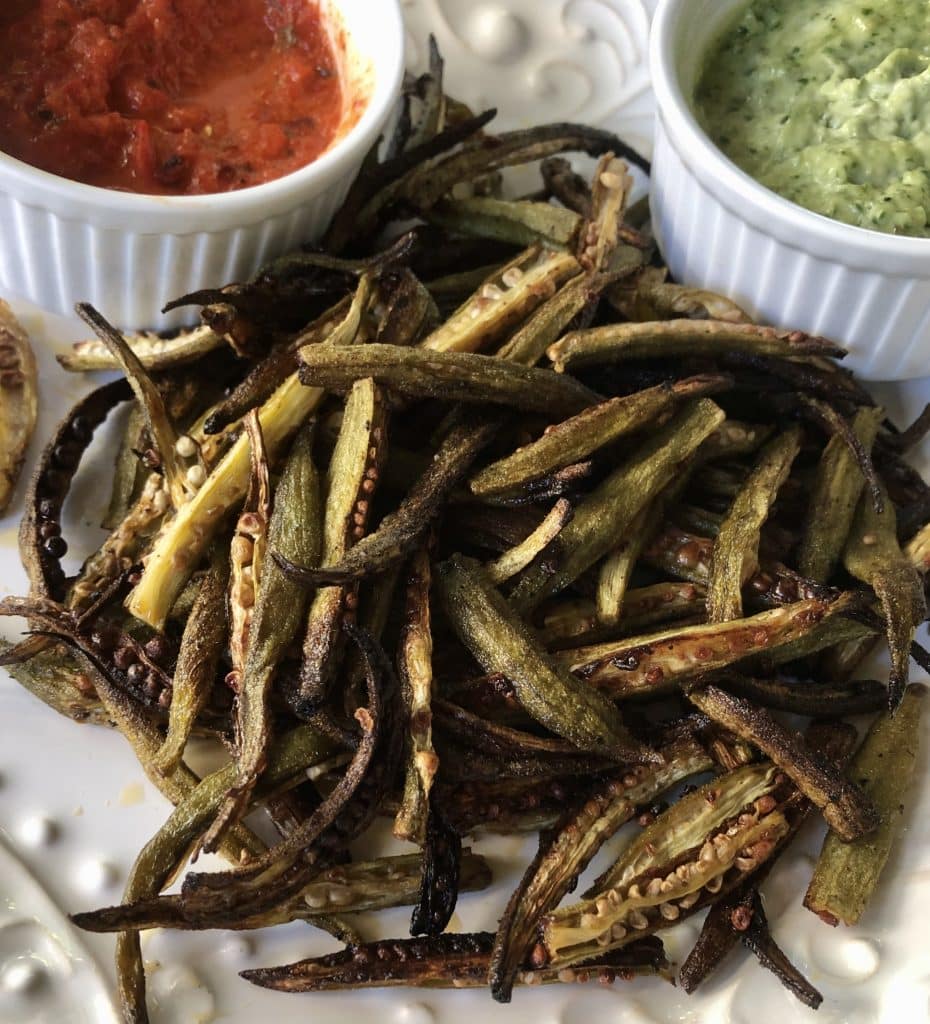
Oven Roasted Okra Fries
This okra recipe create fries cooked in the oven that are crisp and light without the slime. Writing my book in 2014 was really the first time that I really thought about okra nutrition which is quite high in vitamins and minerals.
Makes 4 servings and can be served as an appetizer. In this picture, I served mine with a pesto aoli and a roasted pepper harissa dip.
Approximately 25-30 pods of okra
1-2 tablespoons of olive oil
Salt and pepper to taste
Juice from a fresh lime
A touch of ground cayenne pepper or smoked paprika
Preheat oven to 425 degrees. On a cutting board, slice okra lengthwise into about 4 fries per pod for larger pods. And in half for smaller pods. Arrange on a cookie sheet. Toss fries with olive oil and sprinkle with salt and pepper. Roast approximately 10 minutes or until brown and crisp. Toss with cayenne or smoked paprika and additional salt if needed. Serve with basil aoli or roasted pepper harissa. See how to make them below.
Basil Aoli
You can make your own aoli but I took a short cut and used some real mayonnaise with some homemade pesto. I mixed the combination to about 1/4 cup pesto to 1-2 tablespoon of mayonnaise depending on how creamy that you would like it!
Roasted Pepper Harissa
I split a pepper in half and roasted it first before I put my okra fries in the oven. When the pepper skin begins to separate and get black, put in a bag and let it steam. Gently peel away the skin and puree in a food processor and add about 1 tablespoon harissa seasoning. Process a little more. If you can’t find harissa spice blend, make your own from this recipe .
You may also enjoy this okra stir fry recipe from the Omnivore’s Cookbook.
Learning More About the Health Benefits of Okra
In addition to learning more about the health benefits of okra, there is a lot of interesting information regarding the history and varieties of okra. I was excited to have a chance to talk with Chris Smith together and hear about his book “The Whole Okra- A Stem to Seed Celebration”. I learned so much great information talking to him and reading his book.
I hope that you feel inspired to eat more okra and try some of the new recipes that he shares in his book. If you need a little enticing, start out with some okra fries.
You can meet Chris almost in person and find out a little more about all the wondrous reasons why you should add okra into your summer meals and even beyond!
As a registered dietitian here in Asheville, I love introducing people to new ways of eating healthy! It was really fun to talk with you about the amazing health benefits of okra!
If you are trying to follow a more plant-based eating, you might be interested in my Plant-based diet meal plan & plant-based grocery list (vineripenutrition.com). And after okra season is over and winter squash comes in, you might want to make a few of these recipes!
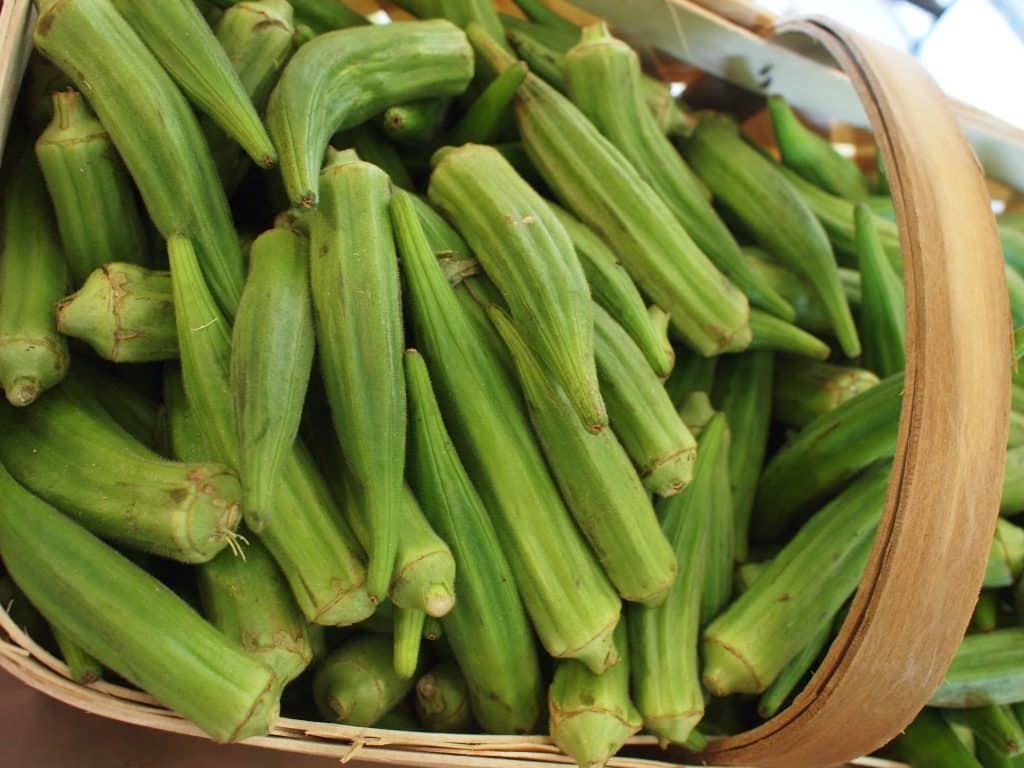

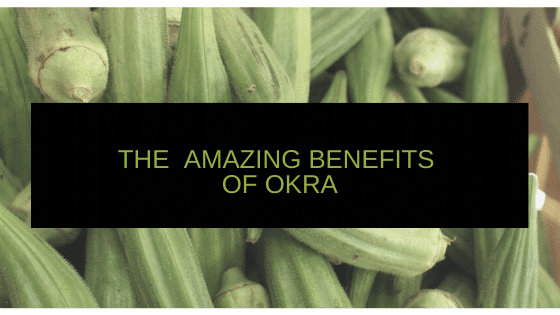

Hello.
Thx for the info.
I bought some n they taste good! I soaked in water too n made the drink.
I then found out that okra is a high oxalate food which I’d have to avoid as I have oxalate poisoning from 10 years of extreme consumption.
I’m so sad now….do you think that I could still drink the water…or would this still be high? Thx so much
Hi Jeanette.
I am unsure if the oxalates are in the sap that gets in the water. I would think it would be the firmer parts of the pod but to be on the safe side, do some research before doing it very often. Thank you so much for letting me know that you tried it out.